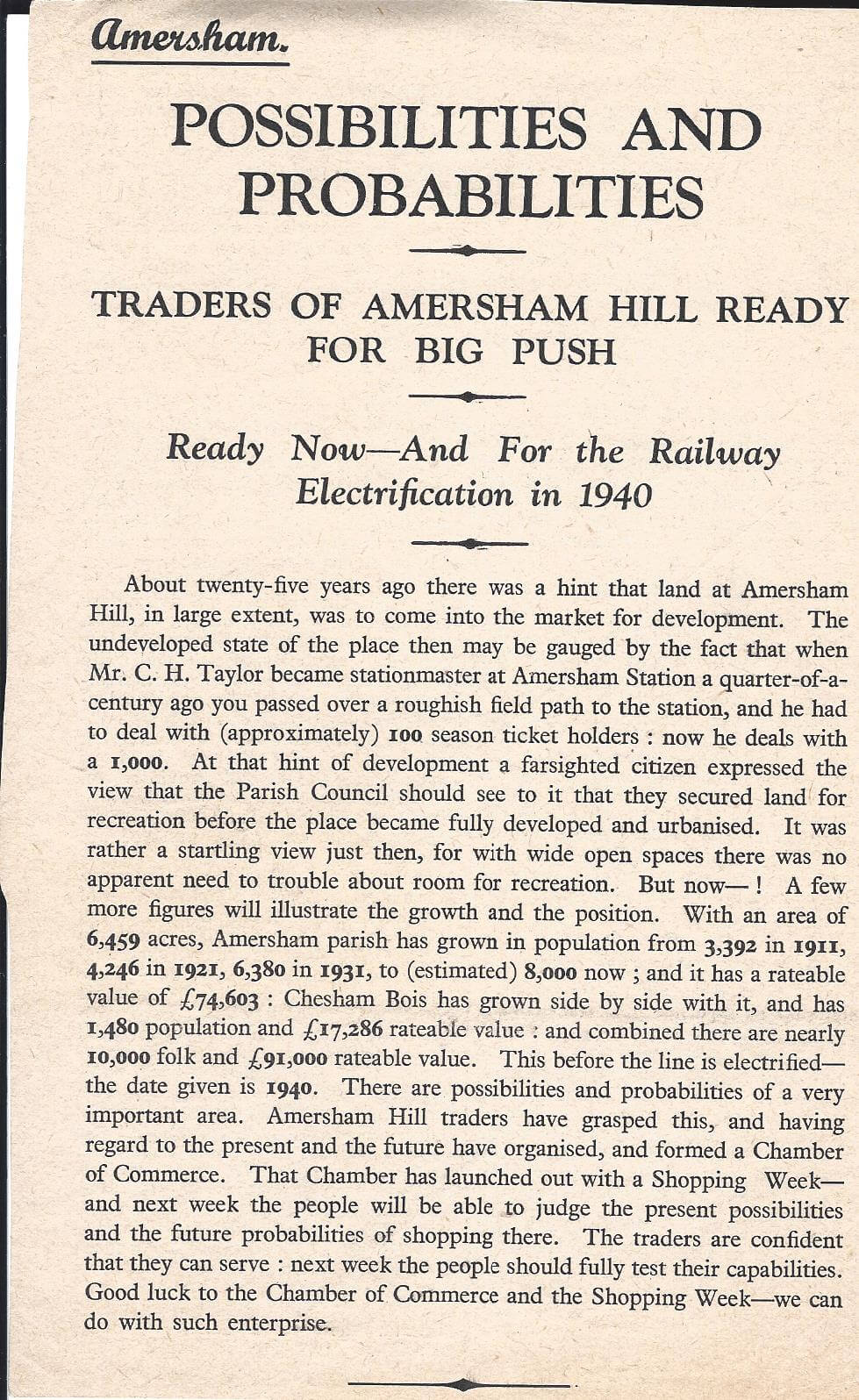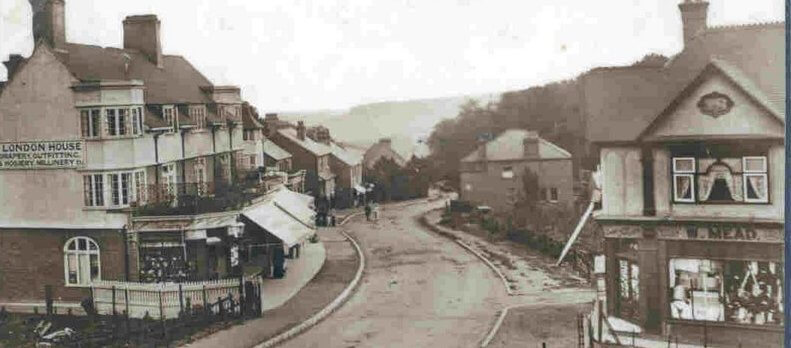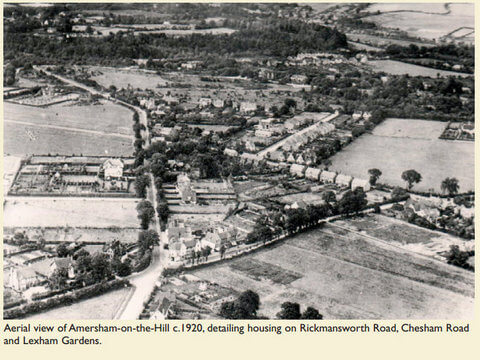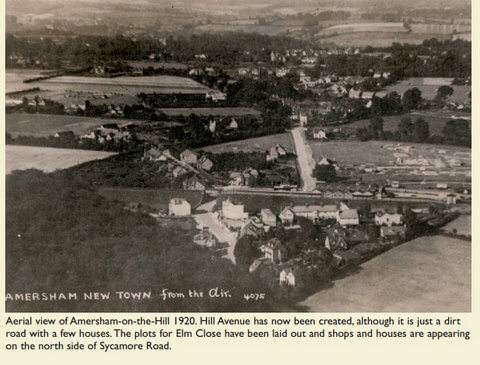The First Settlers
This article was written for the 2013 Metro-land exhibition
After 1892 houses and shops began to appear around the station. The Tyrwhitt-Drakes started to mark out the land for new roads and plots for housing. Similarly the Wellers marked out plots on Station Road where it passed through their Woodside farmland.
The first businesses were concentrated in Station Road, particularly Station Parade, a small row of shops under the railway bridge. The first known shopkeeper was a basket maker who moved to Station Road from Berkhamsted in the early 1900s. By 1907 there was a grocer and a furniture dealer, followed a few years later by a milliner and a draper. In addition to now-established builders and architects, by 1911 Swannell & Sly had set up an estate agency near the station.

Perhaps the most significant newcomer to the town was J H Kennard. A London born architect, Kennard and his partner, W J Sumner, opened an ‘architecture, surveying and estate agency’ on Station Parade in 1907. Kennard was responsible for designing many of the Arts and Crafts style houses in Amersham-on-the-Hill, including houses on Bois Avenue, South Road and Hervines Road. He also designed five shops and three houses in one block at Oakfield Corner in 1912, the National Provincial and Union Bank and the old Free Church (now demolished).
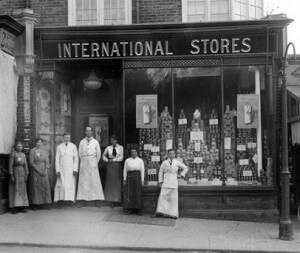
Soon after the station opened essential utilities were developed to service the new town. Registered in 1895 the Amersham, Beaconsfield and District Waterworks dug a well to pump water to a reservoir to serve Amersham and nearby towns. In 1914 a Water Order allowed the company
to build a water tower at Coleshill to increase water pressure and service the growing demands of the town.
The shopkeepers
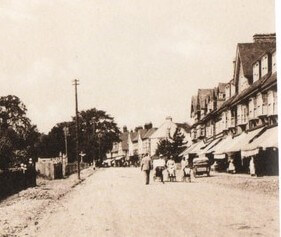
With the surge of new development after the First World War the commercial centre moved away from the station towards Hill Avenue and Sycamore Road. Developed by Falkner & Sons, Hill Avenue was originally residential but over time it became populated with shops.
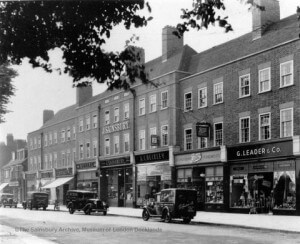
By 1924, Amersham-on-the-Hill was a thriving town, with over 70 shops and businesses catering to every need. The shopkeepers were a mixture of newcomers and inhabitants from the old town taking advantage of the shift of population up the hill. By the mid 1930s the number of shops had more than doubled to over 170. In 1937 Sainsbury’s built the focal point of Sycamore Road, Chiltern Parade. The building was divided into nine shops, with Sainsbury’s occupying the central spot.
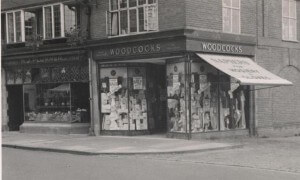
There was significant redevelopment in the 1960s. Woolworth’s arrived on Sycamore Road, on the site of Hall’s Hollybush Nursery. A new St Michael’s Church was built, in front of the original church. Amersham Free Church moved to a new site on the corner of Woodside Road and Sycamore Road. Shops were developed on its former Sycamore Road site. A new row of shops was built at the bottom of Hill Avenue. By the end of the 1960s the shopping streets looked much the way we see them today

Getting ready for electrification
A newspaper cutting
